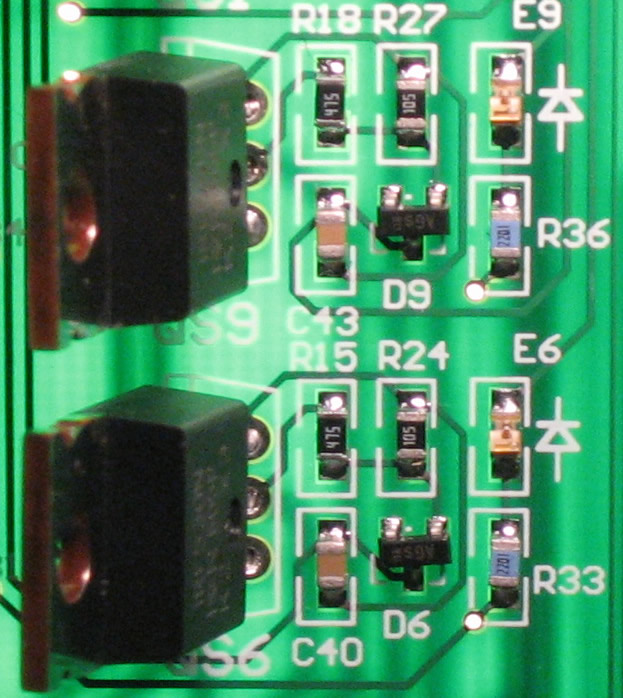The problems associated with the original Gottlieb driver board are four-fold - connections to the CPU can be corroded and cause poor driver/lamp signals; the MPS-U45 is a very difficult transistor to find; the old 2N3055 transistors burned holes through the PCB, and a failed driver board will cause as much damage to a sound board as a failed sound board would do in reverse. Ni-Wumpf has redesigned the System 80 driver board to address all these issues, and adds in a few more features that should prove useful.
Please note that the 50-pin IDC connector at the top of the board is no longer supplied as shown in the picture above. It is not used with the Gottlieb OEM harness.
- Each solenoid has fault detection circuitry that identifies failed playfield/driver board components
- FET solenoid transistors
- Higher rated transistor components for all circuits
- Discrete components for easier/less-expensive service repair in the future. Using a transistor array is neat, but costly, when one lamp in the array fails!
- Open-collector interface to the sound board to buffer against failures generated to/from that source
- Modern component architecture uses currently available parts for easy field service - only parts that do not normally fail are surface mounted
- Diode isolated grounds to prevent playfield lamp problems from the board
Each driver circuit is equipped with fault detection circuitry and LED's that will blink when actuatued, and light steady to indicate circuit failure.
Note that the LED will remain lit when a game does not support the associated playfield driver components. Similarly, it will light if the fuse is blown, or the coil is shorted.

The board was designed to follow the original Gottlieb component functionality as described on the original driver board. So where the original board had ICs Z1 - Z12, this board has the same numbered components. Where the lamp transistors were Q1 - Q52, this board has similarly labeled components that are numbered Q0 - Q51. Why - you ask? I was *always* confused by L0 corresponding to Q1 on the original schematics, and I wanted THIS board to line up the component numbering with the lamp assignments on the playfield schematics! And finally, where the original board had solenoid 1 - 9 output transistors, this board has FETs QS1 - QS9. In this way, the user can follow the original schematics when troubleshooting the board.
It should be noted, that on the System 80, and 80A games, solenoids 3, 4, and 7 were assigned to coin counters for the games (not the case for System 80B games). Most games do NOT have this circuitry, and these LEDs will be lit normally in operation for these circuits. Additionally, there will be an LED lit on the test circuitry for E10 (not used)- this is normal.